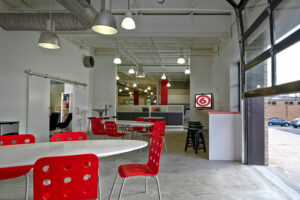
It seems intuitive that when we are happy, we are more productive just as when we are sad, we become despondent and lack motivation to change out of sweatpants and put down the Ben & Jerry’s.
As an employer you could research ways to increase happiness in the workplace and there would be no dearth of potential solutions. Allow more telecommuting, PTO, healthy food options, or an on site fitness center come to mind. But rather than try a confetti of ways to increase happiness, why not foster concentration? Your task: encourage concentration in the workplace.
Employees who are able to concentrate are more productive. By encouraging concentration in the office your employees, their managers, clients and the business enjoy the fruits of productivity and concentration is easier to achieve than happiness.
What kind of work environment is conducive to concentration? A quiet office can help buffer the noise of distracting co-workers but it only goes so far. When you are staring at the same computer for 7 plus hours a day, you have umpteen things going on. There are emails coming in, others you are sending out and don’t even try to count the number of open tabs on your internet browser as Alt + Tab back and forth between different types of tasks. Multi-tasking is like cryptonite to concentration.
First, we need to establish what concentration looks like. A great definition of concentration I found is “taking your mind off many things and putting it on one thing at a time.” This is difficult to do when your employees only have two options: an open layout with or without cubicles or a private office.
Why not invest in a third option – the break out area? This is any space open to employees or visitors that is separate from their usual working area. It can be a place for employees to relax, eat their lunch and even hold informal meetings. Giving employees a break from a computer screen also complies with health and safety laws which require staff to take frequent breaks from their desks when computers are being used.
A few important tips from a design perspective.
1) The room should be separated by a partition if a room is not available. There has to be a physical barrier and not just a designation.
2) Explore soundproofing options – relaxation and meetings need to be free from co-worker’s conversations about last night’s game. (Go Falcons!)
3) Designate this area as a cell phone free zone. Those kind of personal conversations are best had in other parts of the building. The lower lobby perhaps?
4) Change up the lighting. Create lighting that is softer and more informal. See previous blog article on lighting, specifically task lighting.
If you have the space, consider creating more than one kind of breakout room:
1) a quiet place for quiet work – seen in offices where open layouts are the norm
2) a place for group conversations and co-working sessions
3) a call room where you can quietly work and make phone calls.
For #2, if you have a “Starbucks like” atmosphere at work, your employees won’t have to “escape” the office to “clear their head.” They can bounce ideas off of one another and translate these to action in minutes.
Are there ways you could turn a storage room into a break out room? Or is there an office reserved for visiting employees that sits unoccupied 85% of the time. You may have to get creative with where you store old files (or transfer these to digital images) or encourage the visiting employee to work at the desk of an absent employee, but the majority of your employees will benefit in the long run.
At Planning Interiors, we will work with you to design and create a space conducive to concentration. We’ve worked with all types of companies and although the product or service differs, their need for a space or room for concentration remains the same.